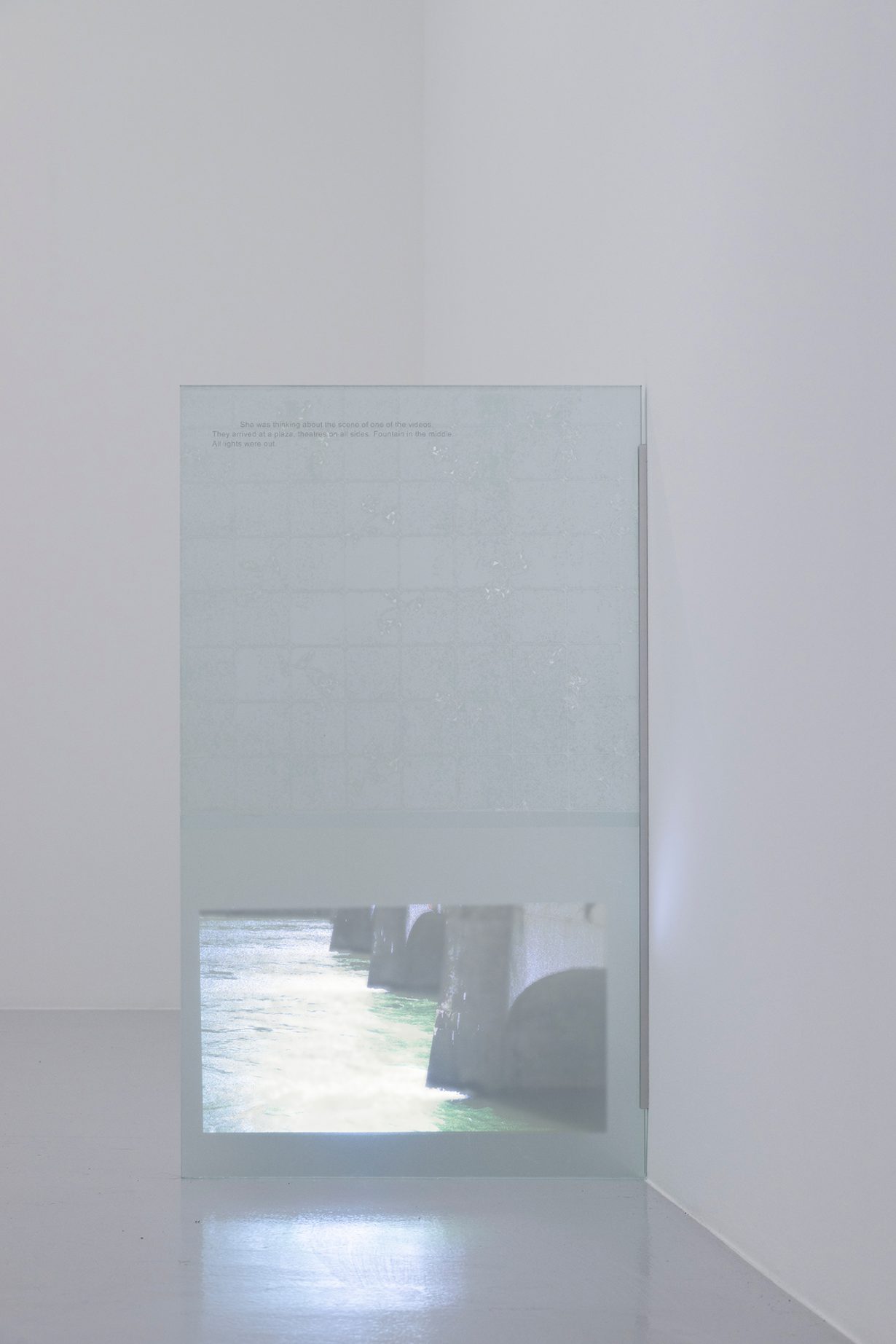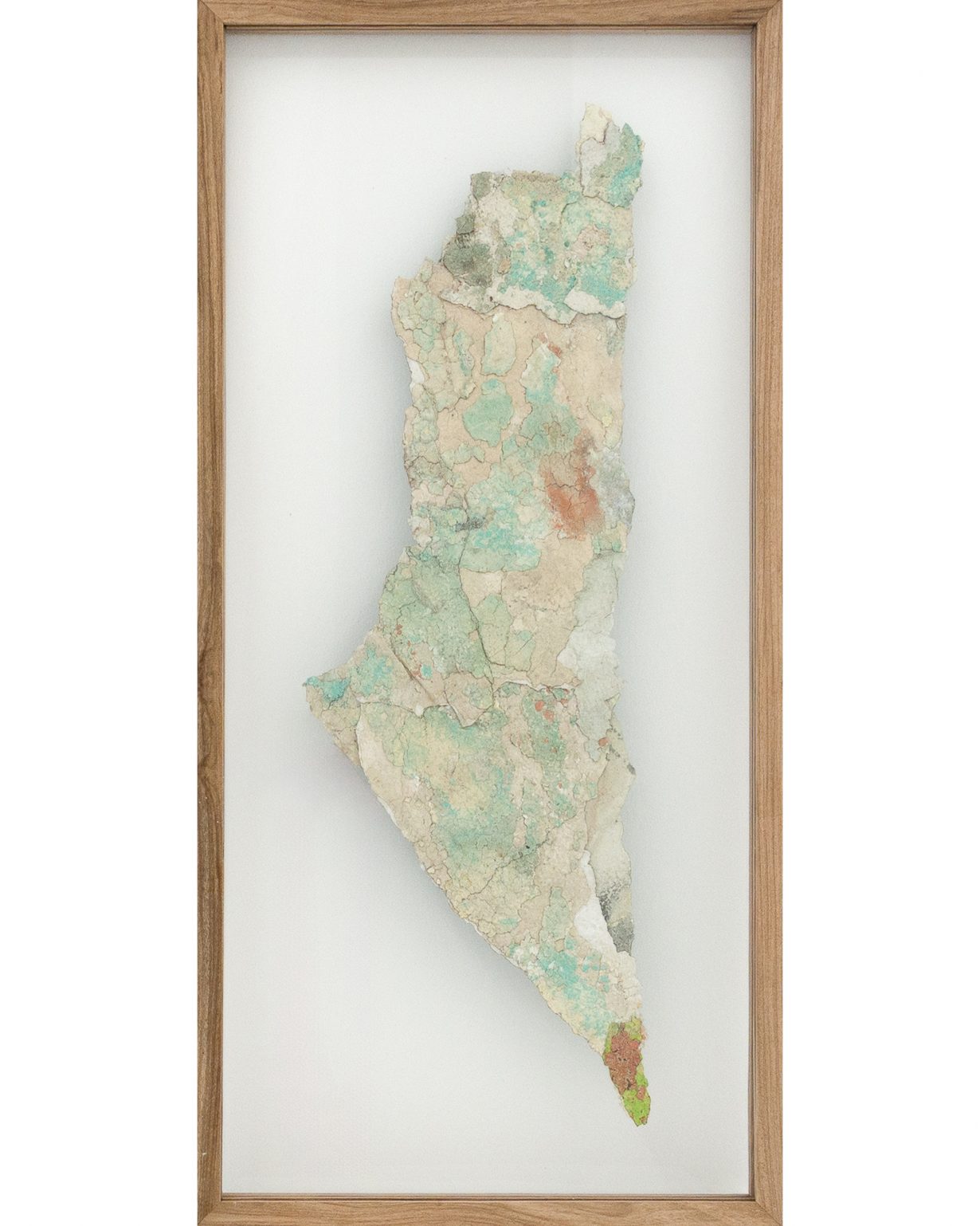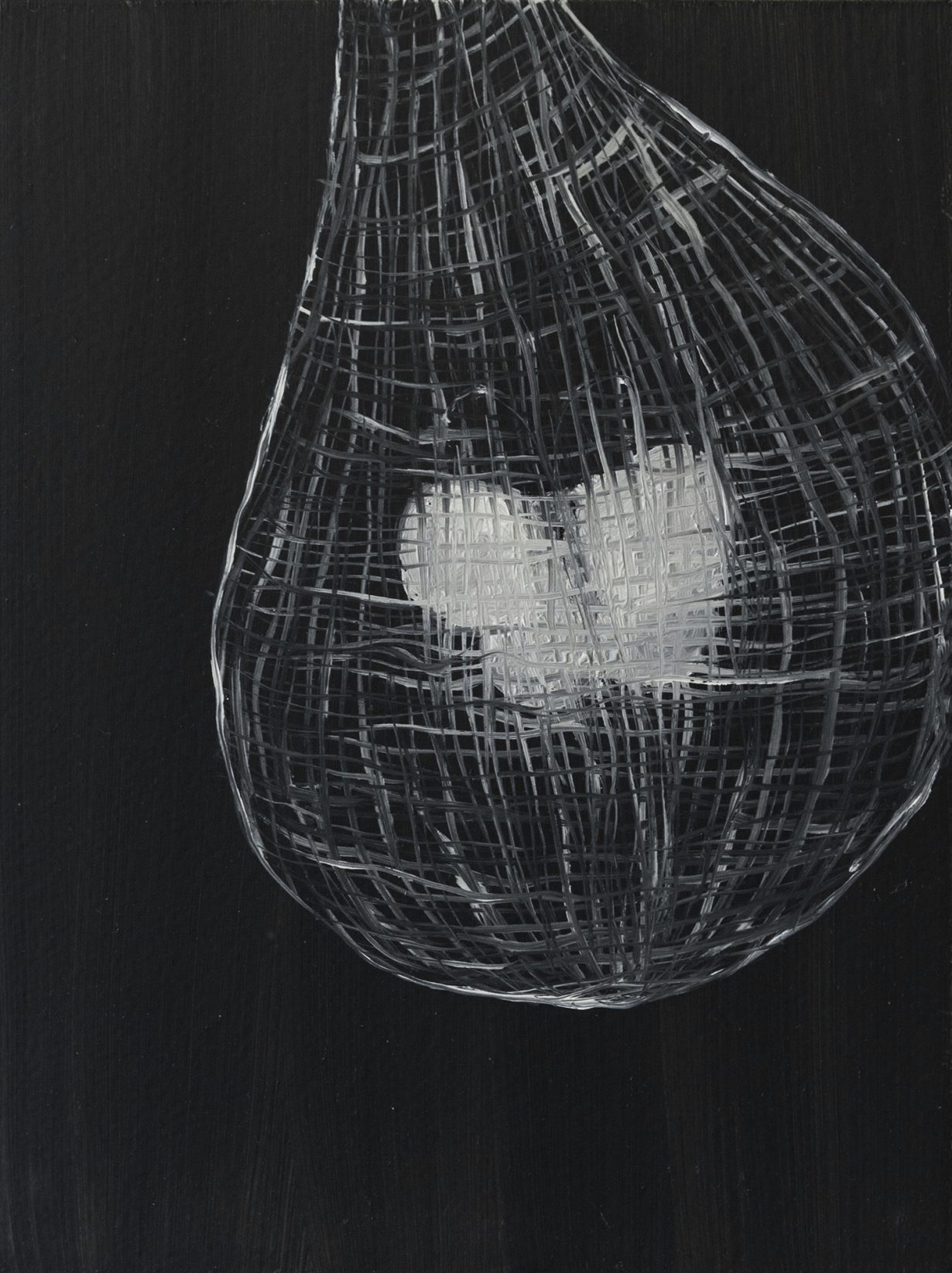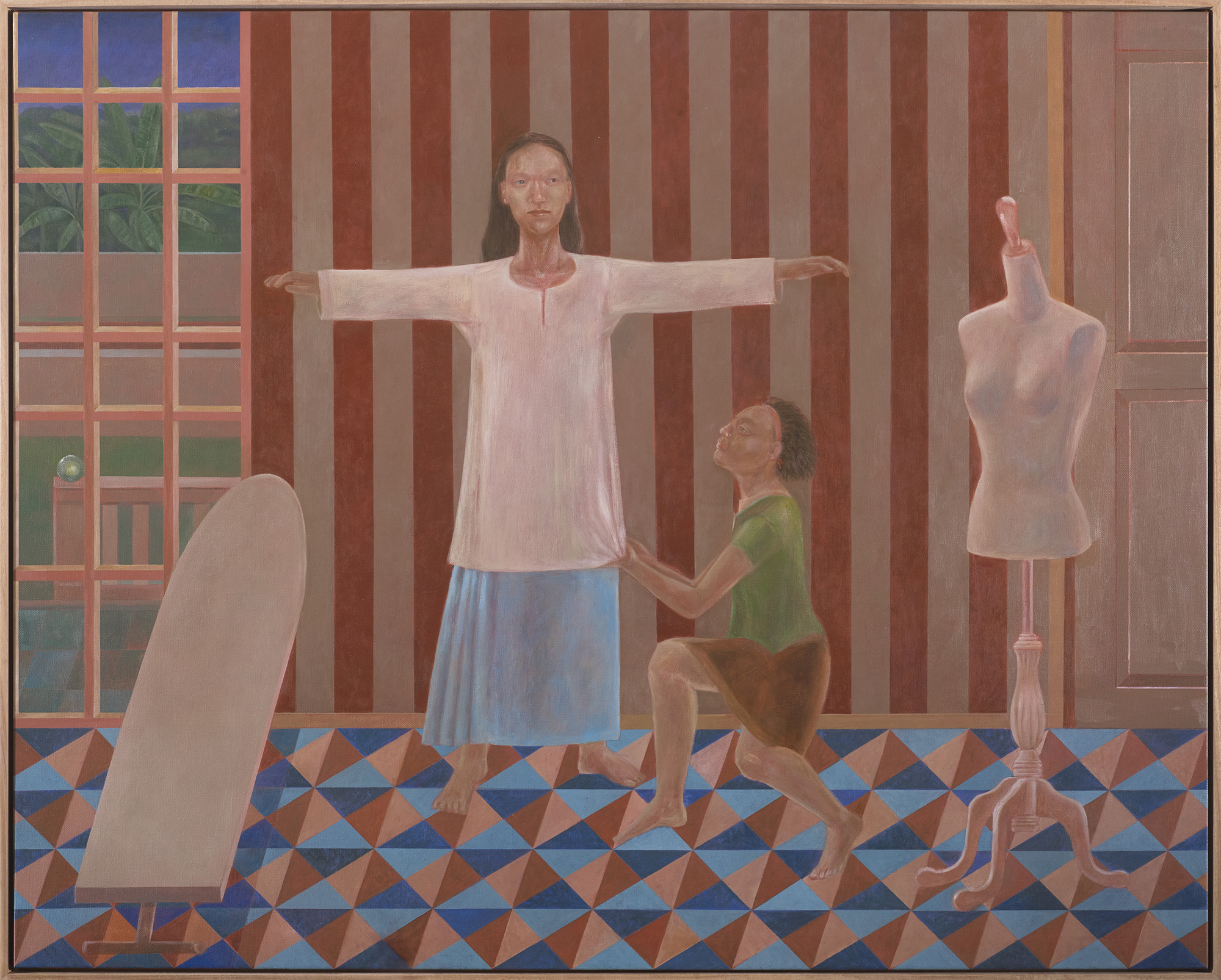Fresh off a tour of Singapore’s current gallery offerings, Adeline Chia recounts the dreamscapes and hollow-eyed monkeys she spotted along the way
The first work you encounter in Tropic of Perception, a group exhibition at Singapore’s Ames Yavuz Gallery, is Pam Virada’s Seaside Highway (2025), a frosted, green-tinted window mounted perpendicular to the wall. Printed at the top of the glass panel is a mysterious text: ‘She was thinking about the scene of one of the videos. They arrived at a plaza, theatres on all sides. Fountain in the middle. All lights were out.’ Below this text fragment is a greenish video-projection of a river flowing through the arches of an aqueduct. It is a mesmerising sight until a subtle skip in the footage – blink and you miss it – reverses the direction of the water’s flow. Through a blend of cleverly chosen elements, Virada’s work plays on levels of transparency and legibility: the blurriness of the frosted-glass window; the enigmatic text about emptied cities and stages; and the blip in the water flow. Everything feels pregnant with meaning, but exactly what that meaning is remains just out of reach – like the vague memory of a dream.
With its evocative ambiguity, Seaside Highway provides an apt introduction to an exhibition about the mutable, unstable process of human perception. Featuring the works of six artists, Tropic Perception explores how ways of seeing and understanding can be fluid. You could argue that this is one of the fundamental qualities of art, where meaning is open-ended. But such curatorial exercises are always pertinent in a world in which the rigid bifurcation of perspectives has caused and will continue to cause division and strife. Moreover, the artworks here are rich and subtle – and I left with a feeling of ephemerality not just when it came to human perception but to all things.

Viewers play a guessing game in Vong Phaophanit and Claire Oboussier’s Les Beaux Restes (2024), a series of delicate silvery hollow sculptures that are hard to identify. Are they seed pods? Fancy teacups? Human remains? The gallerist states that they are well-used dog-chew bones cast in pewter – a spent object now elevated to exquisite artefact. Exploring another form of mutability is Chemi Rosado-Seijo’s series of maps made from cracked paint peeled from the walls of houses in El Cerro, a working-class community in Puerto Rico where he has carried out various social-practice initiatives, including building an art hub in an abandoned government-owned building. The artist has also organised the painting of the houses’ facades different shades of green to fit in with the mountainous surroundings. To prime the walls, he scrapes off layers of old paint and salvages these flakes to later assemble them in the studio into the shapes of land masses. Framed in glass and installed perpendicular to the wall, we can see both sides: one side of the paint is typically a relatively even green colour, the other patchier and more textured, made out of different layers of mismatched paint accumulated over the years. In Los Sures se besan (The South’s Kisses, 2025), the roughly conical shapes of South America and Africa are brought together, side by side, resembling a pair of lungs; while Palestina echa de mapas inconclusos (Palestine Made of Unfinished Maps, 2025) shows the long daggerlike shape of Israel and the Occupied Territories currently under siege by Israel. These maps end up being a modest but moving form of solidarity – a tribute made up of delicate, historied fragments that embody the resilience and empowerment of a community.

Tropic of Perception is a standout among the many summer shows at Singapore’s Gillman Barracks. Other noteworthy group exhibitions include Figure at Ota Fine Arts, showing five artists, among them Zai Kuning, whose recent batik-dye-on-paper works depict translucent overlapping layers of red bodies that evoke ghosts and departures, as well as Maria Farrar’s bold, colourful and psychologically charged portraits. Over at Fost Gallery is 1 x 1 x 1, an exhibition limited to works that are no bigger than one cubic metre. Artists have responded with a range of material investigations: Sebastian Mary Tay offers a series of black-and-white giclée prints depicting views of semiabstract landscapes collaged together from found photos (Where Does the Sun Rise; Where Will the Moon Shine, 2018); Hazel Lim has made a series of paper works that use coloured threads embroidered onto paper to create intricate layers of shapes, colours and patterns. (Fun fact: these were inspired by the diagrams that Lim encountered while doing maths worksheets with her daughter to prepare for the stressful national examinations that all twelve-year-olds in Singapore have to sit.)


Of solo exhibitions, primal energies are swirling in Mizuma Gallery, in which the Balinese artist I Made Djirna’s exhilarating earth-toned canvases churn with people, animals and spirits. Things take a darker, more existential turn in Han Mengyun’s Jewels of Impermanence (the title comes from a poem the artist penned during the COVID epidemic in 2020) at ShanghART with spare, monochrome paintings of wilting flowers, butterflies in netted bags, arrangements of skulls and bones, and cobwebs with silvery pearls.
Finally, Yeo Workshop is showing the recent oeuvre of Malaysian painter Noor Mahnun, better known as Anum. Her distinctive oil paintings, featuring a flat perspective, protagonists with blank faces and oftentimes crazily detailed geometric prints for the background, render familiar situations uncanny and slightly unhinged. In Boxers (2025), three men in underwear are boxing in front of three blocks of flats under a purple sky, standing on piles of gravel that resemble skulls. My personal favourites of the exhibition are three paintings depicting dusky leaf monkeys visiting the balcony of the artist’s home (Leaf Monkey I, II, III, 2022–24). Sitting on the railing in relaxation, with their black faces and white-ringed eyes poised somewhere between ghoulish and cute, they resemble less primates venturing into urban spaces than strangers from a different realm.
